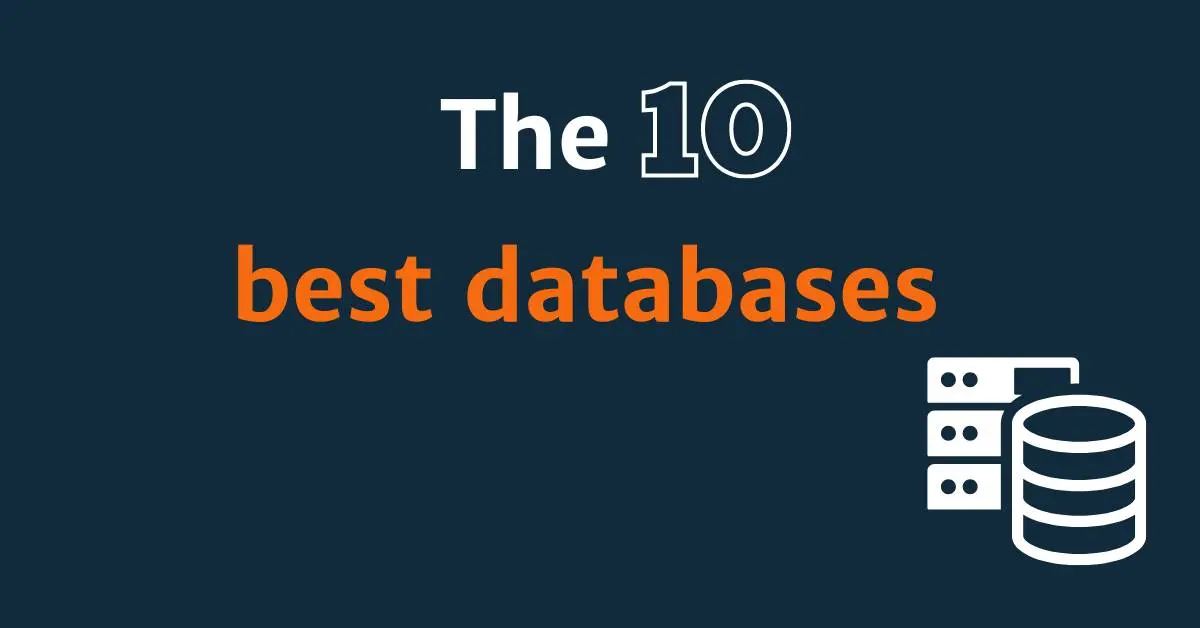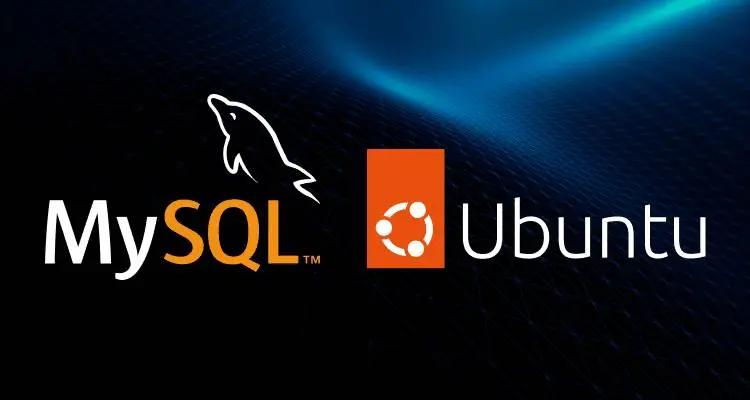In the fast-evolving world of web development, choosing the right database is critical to building scalable, efficient, and secure applications. As we move into 2025, databases continue to evolve, offering new features, improved performance, and better integration with modern frameworks. Whether you’re building a dynamic web app, an e-commerce platform, or a content management system, understanding the top databases available is essential for success. In this article, we’ll explore the top 10 databases every web developer should know in 2025, covering their features, use cases, and why they’re trending. From relational powerhouses like MySQL to NoSQL giants like MongoDB, this guide will help you make informed decisions for your next project.
By the end of this article, you’ll learn:
- The best relational and NoSQL databases for web development in 2025
- Key features and use cases for each database
- How to choose the right database for your web application
- Emerging trends in database technology for developers
Why Databases Matter for Web Developers
Databases are the backbone of any web application, storing and managing the data that powers user interactions. From user profiles to product inventories, a well-chosen database ensures performance, scalability, and reliability. In 2025, the demand for real-time data processing, cloud-native solutions, and AI-driven analytics is shaping the database landscape. Whether you’re a beginner or a seasoned developer, staying updated on the best databases for web development is crucial to stay competitive.
Top 10 Databases for Web Developers in 2025
Based on popularity, performance, and relevance to modern web development, here are the top 10 databases you should know in 2025, backed by insights from industry sources like the Stack Overflow Developer Survey.
1. PostgreSQL
Why It’s Popular: PostgreSQL continues to dominate as the most popular database in 2025, with a 48.7% adoption rate among developers, according to the Stack Overflow Developer Survey. This open-source relational database is known for its robustness, extensibility, and support for advanced data types like JSON and geospatial data.
Key Features:
- Advanced indexing and full-text search
- Support for JSON/JSONB for NoSQL-like flexibility
- High reliability with ACID compliance
- Extensive ecosystem for cloud integration
Use Cases: Ideal for complex applications like e-commerce platforms, GIS applications, and data analytics dashboards.
Code Example: Setting up a simple table in PostgreSQL:
CREATE TABLE users (
id SERIAL PRIMARY KEY,
username VARCHAR(50) NOT NULL,
email VARCHAR(100) UNIQUE
);
INSERT INTO users (username, email) VALUES ('johndoe', 'john@example.com');Why Learn It: Its versatility and strong community support make PostgreSQL a must-know for web developers building scalable applications.
2. MySQL
Why It’s Popular: MySQL remains a staple for web developers, with a 40.3% popularity rate in 2025. Its ease of use and integration with popular frameworks like Laravel and Django make it a go-to choice.
Key Features:
- High performance for read-heavy applications
- Wide compatibility with hosting providers
- Robust replication and clustering
Use Cases: Perfect for content management systems (e.g., WordPress), e-commerce, and small to medium-sized web apps.
Code Example: Creating a table in MySQL:
CREATE TABLE products (
product_id INT AUTO_INCREMENT PRIMARY KEY,
name VARCHAR(255) NOT NULL,
price DECIMAL(10,2)
);
INSERT INTO products (name, price) VALUES ('Laptop', 999.99);Why Learn It: MySQL’s simplicity and widespread use make it essential for developers working on traditional web projects.
3. MongoDB
Why It’s Popular: As a leading NoSQL database, MongoDB is favored for its flexibility in handling unstructured data, making it ideal for modern web apps.
Key Features:
- Document-based storage with JSON-like BSON format
- Horizontal scaling with sharding
- Cloud-native with MongoDB Atlas
Use Cases: Suited for real-time applications, social media platforms, and content-heavy websites.
Code Example: Inserting a document in MongoDB:
db.users.insertOne({
"username": "janedoe",
"email": "jane@example.com",
"age": 28
});Why Learn It: MongoDB’s scalability and ease of use with JavaScript frameworks like Node.js make it a top choice for full-stack developers.
4. SQLite
Why It’s Popular: SQLite is a lightweight, serverless database perfect for small-scale web and mobile apps.
Key Features:
- Zero-configuration setup
- Embedded database with small footprint
- Supports standard SQL
Use Cases: Ideal for prototyping, mobile apps, and lightweight CMS.
Code Example: Creating a table in SQLite:
CREATE TABLE tasks (
id INTEGER PRIMARY KEY AUTOINCREMENT,
task_name TEXT NOT NULL,
completed BOOLEAN
);
INSERT INTO tasks (task_name, completed) VALUES ('Finish project', 0);Why Learn It: Its simplicity makes it great for quick projects and learning SQL basics.
5. Firebase
Why It’s Popular: Firebase, Google’s NoSQL database, is a favorite for rapid development and real-time applications.
Key Features:
- Real-time data synchronization
- Integrated with Google Cloud services
- Easy authentication and hosting
Use Cases: Real-time chat apps, collaborative tools, and mobile-first web apps.
Code Example: Adding data to Firebase Realtime Database:
const { getDatabase, ref, set } = require("firebase/database");
const db = getDatabase();
set(ref(db, 'users/1'), {
username: "alice",
email: "alice@example.com"
});Why Learn It: Firebase’s ease of integration with front-end frameworks makes it ideal for rapid prototyping.
6. Redis
Why It’s Popular: Redis is an in-memory database known for its blazing-fast performance, often used for caching.
Key Features:
- In-memory key-value store
- Support for data structures like lists and sets
- High throughput for caching
Use Cases: Session management, caching, and real-time analytics.
Code Example: Setting a key in Redis:
SET user:1000 "John Doe"
GET user:1000Why Learn It: Redis is essential for optimizing web app performance through caching.
7. MariaDB
Why It’s Popular: A fork of MySQL, MariaDB offers enhanced performance and additional features.
Key Features:
- Drop-in replacement for MySQL
- Improved query optimizer
- Open-source with strong community
Use Cases: CMS, e-commerce, and legacy MySQL migrations.
Code Example: Similar to MySQL, creating a table:
CREATE TABLE orders (
order_id INT AUTO_INCREMENT PRIMARY KEY,
customer_id INT,
total DECIMAL(10,2)
);Why Learn It: MariaDB is a great alternative for MySQL users seeking better performance.
8. Microsoft SQL Server
Why It’s Popular: A robust relational database for enterprise-grade web applications.
Key Features:
- Integration with Microsoft Azure
- Advanced security features
- Support for complex queries
Use Cases: Enterprise applications, financial systems, and large-scale web platforms.
Code Example: Creating a table:
CREATE TABLE employees (
EmployeeID INT PRIMARY KEY IDENTITY(1,1),
FirstName NVARCHAR(50),
LastName NVARCHAR(50)
);
INSERT INTO employees (FirstName, LastName) VALUES ('Sarah', 'Smith');Why Learn It: Ideal for developers working in Microsoft-centric environments.
9. Cassandra
Why It’s Popular: Apache Cassandra excels in handling large-scale, distributed data for high-traffic web apps.
Key Features:
- Distributed architecture for scalability
- High availability with no single point of failure
- Column-family-based NoSQL
Use Cases: Big data applications, IoT, and time-series data.
Code Example: Creating a keyspace and table:
CREATE KEYSPACE myapp WITH replication = {'class': 'SimpleStrategy', 'replication_factor': 1};
CREATE TABLE myapp.users (
user_id UUID PRIMARY KEY,
username TEXT,
email TEXT
);Why Learn It: Cassandra is perfect for developers building globally distributed apps.
10. Elasticsearch
Why It’s Popular: Elasticsearch is a search and analytics engine used as a database for text-heavy applications.
Key Features:
- Full-text search capabilities
- Distributed and scalable
- JSON-based document storage
Use Cases: Search engines, logging, and analytics dashboards.
Code Example: Indexing a document:
PUT my_index/_doc/1
{
"username": "bob",
"post": "Learning Elasticsearch"
}Why Learn It: Its search capabilities make it essential for content-driven web apps.
How to Choose the Right Database
Selecting a database depends on your project’s requirements:
- Data Structure: Use relational databases (e.g., PostgreSQL, MySQL) for structured data and NoSQL (e.g., MongoDB, Cassandra) for unstructured data.
- Scalability: For horizontal scaling, choose MongoDB or Cassandra. For vertical scaling, MySQL or PostgreSQL work well.
- Performance: Redis for caching, Elasticsearch for search, and Firebase for real-time apps.
- Budget: Open-source options like PostgreSQL and MariaDB are cost-effective, while Firebase and SQL Server may involve licensing or cloud costs.
Database Trends to Watch in 2025
In 2025, expect these trends to shape database usage:
- Cloud-Native Databases: Solutions like MongoDB Atlas and Firebase dominate for their scalability.
- AI Integration: Databases are increasingly supporting AI-driven analytics.
- Hybrid SQL/NoSQL: PostgreSQL’s JSON support bridges the gap between relational and NoSQL.
Conclusion
Mastering the top databases for web developers in 2025 is a game-changer for building modern, high-performance web applications. From the versatility of PostgreSQL to the speed of Redis, each database offers unique strengths. By understanding their features and use cases, you can choose the right tool for your project and stay ahead in the competitive world of web development.
Want to dive deeper into coding and development? Check out our Databases tutorials category for more hands-on guides and resources!


